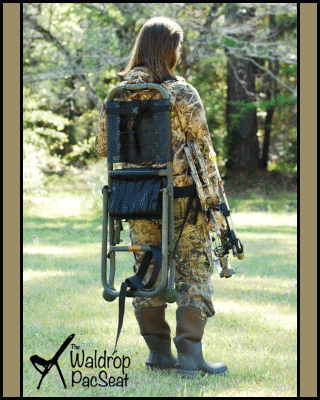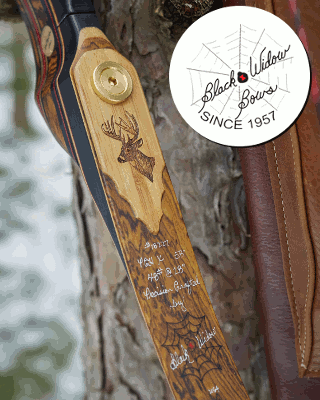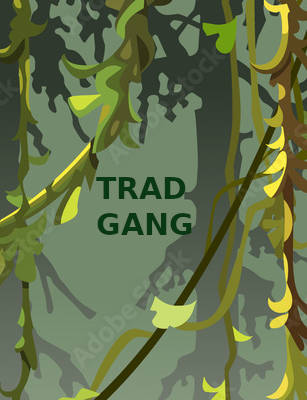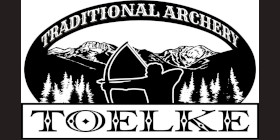It started as a study that would ultimately strengthen the Pennsylvania Game Commission's deer management program. But its initial findings will likely be surprising to many hunters and definitely don't support long-held beliefs.
Researchers from the Game Commission and Pennsylvania Cooperative Fish and Wildlife Research Unit at Penn State University recently completed the second year of a female white-tailed deer study that focuses on their survival, and the behavior of deer and hunters during hunting seasons.
"This study was designed to address needs in our deer management program," said Dr. Christopher Rosenberry, Game Commission Deer Management Section supervisor. "Gaining a better understanding of deer survival can improve our ability to track deer populations and to adjust their size through the issuance of antlerless deer licenses."
Since the spring of 2005, field crews have captured more than 250 deer in both Wildlife Management Unit 2G - in northcentral Pennsylvania - and WMU 4B - ridge and valley region comprising southcentral counties. Researchers placed radio collars on female deer to monitor their survival and movements. During the firearms hunting season, researchers take to the air and conduct aerial surveys of hunter distribution and densities.
Preliminary results indicate non-hunting survival rates exceed 80 percent on both study areas. Outside of the hunting seasons, deer-vehicle collisions and deaths that could not be assigned a specific cause of death accounted for most mortalities. Predators killed two adult female deer during the fall of 2006.
"In October, field crews in WMU 2G discovered a female deer with claw marks and bite wounds consistent with a bobcat kill," said Bret Wallingford, Game Commission wildlife biologist. "Then in November, field crews discovered another doe that had been killed by a bear.
"These predator kills represent about one percent of the animals we were tracking during the fall of 2006, and less than one percent of all of the female deer we have followed over the past two years. Clearly, predators have not had a substantial impact on our radio-collared female deer on either study area."
In 2006, hunters harvested 17 of the 141 female deer being monitored in the study.
"We will use information taken from harvested and unharvested deer to evaluate factors affecting whether a female deer is harvested," noted Matthew Keenan, graduate student from the Pennsylvania Cooperative Fish and Wildlife Research Unit at Penn State University. "For example, we will be looking at the age of the deer, location and terrain characteristics of their home ranges, along with other factors to determine what influences a female deer's vulnerability."
Rosenberry added, "This study seeks to improve our understanding of the relationship between female deer harvest vulnerability and various biological factors. For example, establishing to what degree a deer's age influences its susceptibility to harvest will enhance our ability to monitor deer populations."
During 2005 and 2006 firearms seasons, researchers used airplanes to fly over each study area counting and locating hunters on the ground. Unlike 2005, when poor weather hampered flights during the firearms season, the weather was more cooperative in 2006.
Although hunter density analysis has not been completed for 2006, preliminary data indicate that the opening morning of rifle season brought out as many as 6.5 hunters per square mile in WMU 2G, and about 5.5 hunters per square mile in 4B. While researchers were unable to fly the first two days in 2005, the trends for the rest of the two-week season appear similar between the two years.
"Based on our 2005 flights, we observed differences in hunter locations in WMUs 2G and 4B," said Keenan. "Hunters in WMU 2G hunted closer to roads and in areas with less slope than randomly-distributed points. In WMU 4B, hunter locations were not affected by distance from roads or slope of the terrain."
"Deer distributions also differed by study area," noted Keenan. "In WMU 2G, density of radio-collared deer increased with steeper terrain, but distance to the nearest road did not appear to affect deer locations. In WMU 4B, density of radio-collared deer increased with steepness of terrain and with greater distance from the nearest road."
"Study results, to date, emphasize a common finding from our research projects in recent years," said Dr. Duane Diefenbach, assistant unit leader of the Pennsylvania Cooperative Fish and Wildlife Research Unit at Penn State University. "In every study we have conducted over the past seven years, we see differences across our study areas. This variability reinforces the idea that generalizations about Pennsylvania deer, as well as hunters, should be avoided."
Research projects of this magnitude cannot be completed without cooperation and assistance from other agencies, organizations and individuals. State Department of Conservation and Natural Resources personnel in each study area have provided assistance and access to field crews. Organizations, including the Quality Deer Management Association, National Fish and Wildlife Foundation, Pennsylvania Deer Association, Lehigh Valley Chapter of Safari Club International and the Garden Club of Wilmington, have provided more than $57,000 in funding and equipment to support ongoing deer research. Researchers also are indebted to private landowners across Pennsylvania who have graciously provided access to their properties for deer capture and tracking activities.
"We occasionally hear about negative attitudes regarding deer or their management, but my experiences working with landowners and other agencies on this project have been and continue to be overwhelmingly positive," said Walter "Deet" James Jr., wildlife biologist aide in the WMU 4B study area. "Most people I come into contact with are sincerely interested in our research. The cooperation of so many people outside the Game Commission has greatly improved our ability to carry out this project."
Created in 1895 as an independent state agency, the Game Commission is responsible for conserving and managing all wild birds and mammals in the Commonwealth, establishing hunting seasons and bag limits, enforcing hunting and trapping laws, and managing habitat on the 1.4 million acres of State Game Lands it has purchased over the years with hunting and furtaking license dollars to safeguard wildlife habitat. The agency also conducts numerous wildlife conservation programs for schools, civic organizations and sportsmen's clubs.
The Game Commission does not receive any general state taxpayer dollars for its annual operating budget. The agency is funded by license sales revenues; the state's share of the federal Pittman-Robertson program, which is an excise tax collected through the sale of sporting arms and ammunition; and monies from the sale of oil, gas, coal, timber and minerals derived from State Game Lands.




















